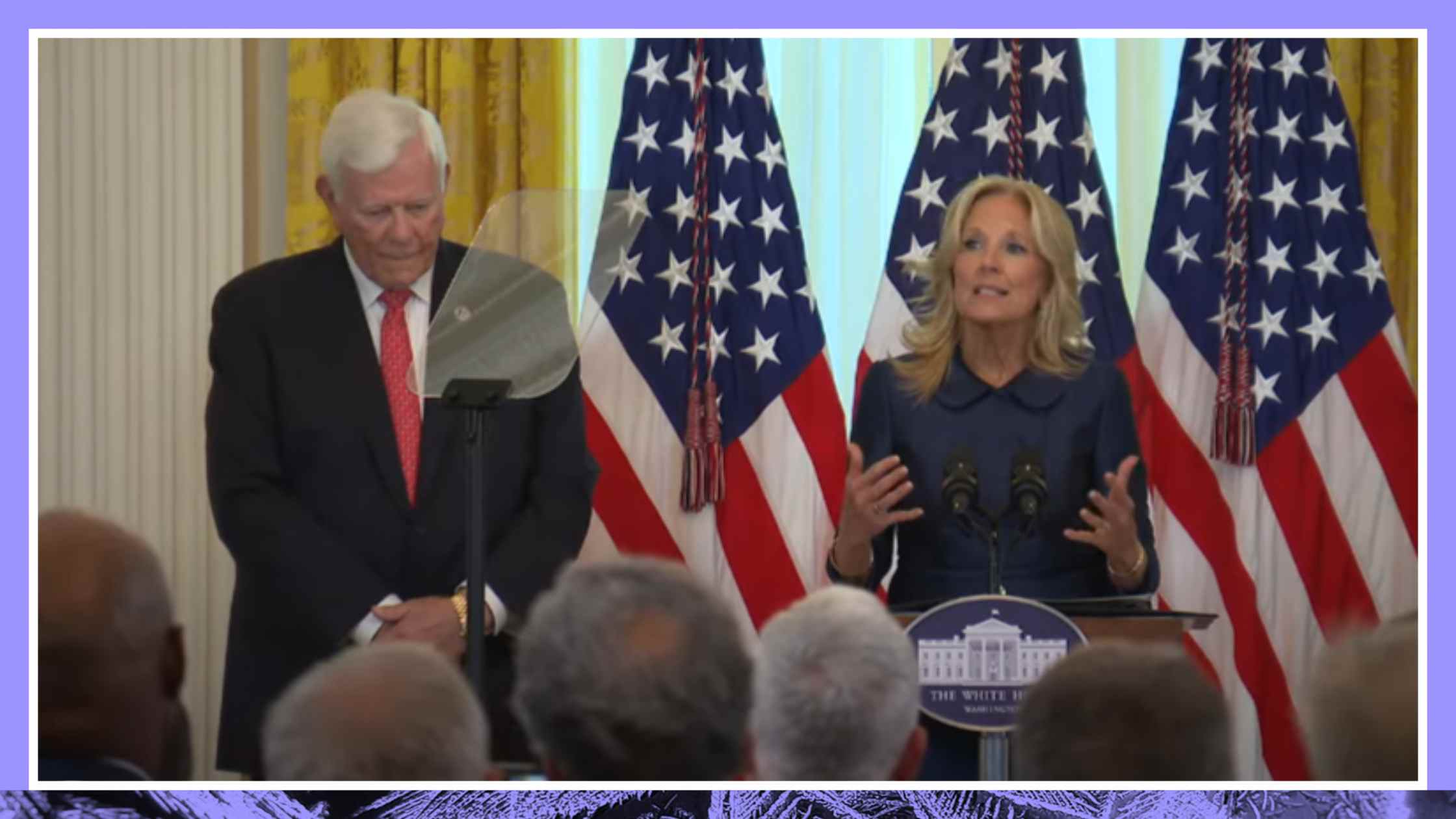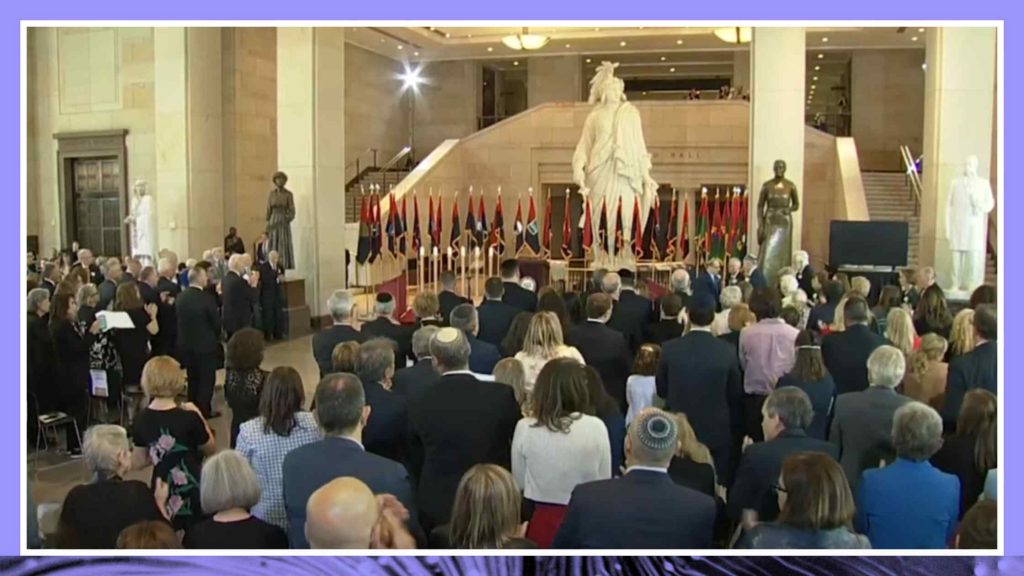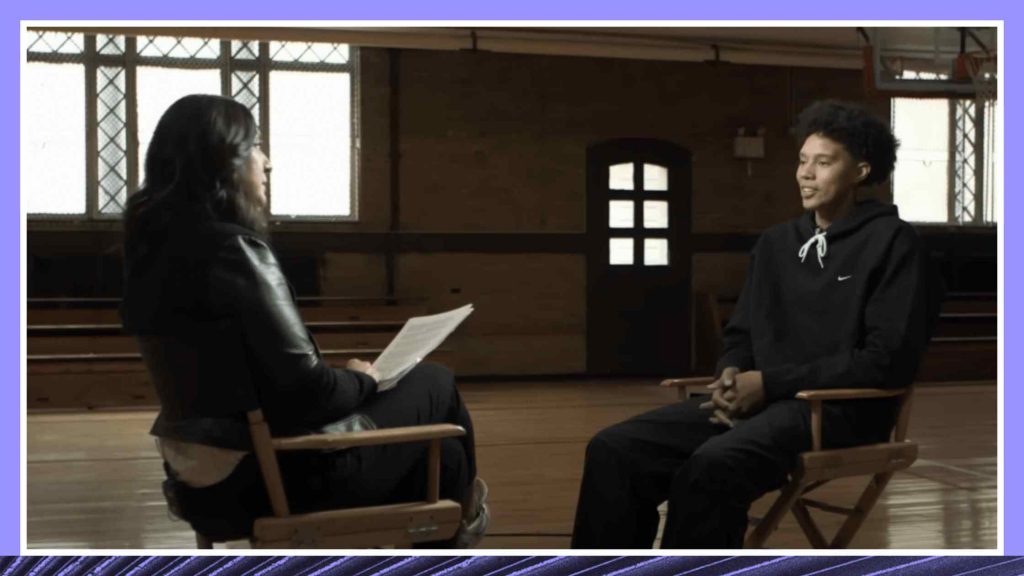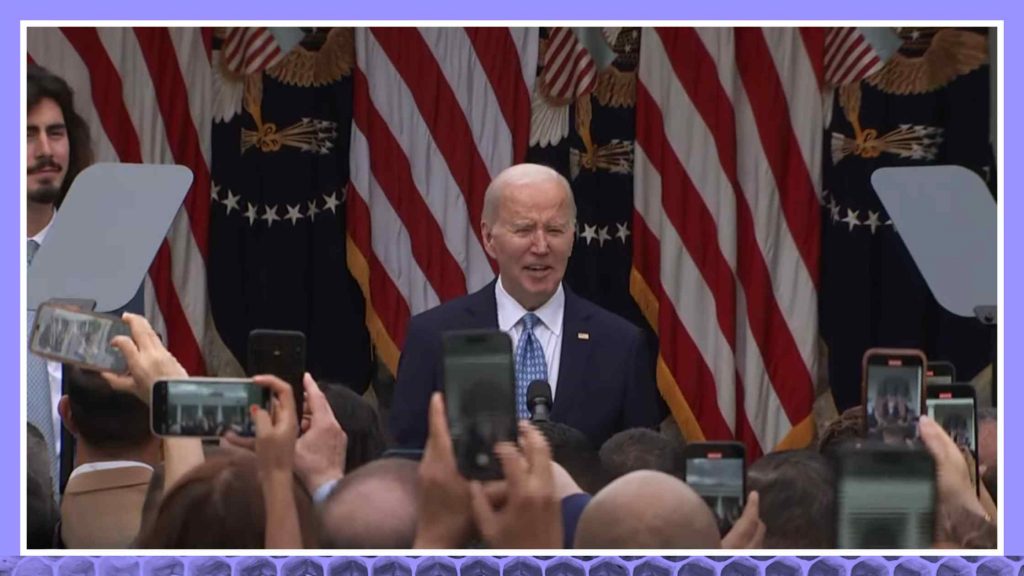May 8, 2024
World War I Centennial Commission Reception

First Lady Jill Biden hosts a White House event to honor the men and women who served during World War I. Read the transcript here.
The First Lady of the United States, accompanied by the Chairman of World War I Centennial Commission, Terry Hamby.
Dr. Biden (00:12):
Hi everybody. Hello. Great crowd. So welcome to The White House. “They were mortal, but they were unconquerable.” Those are the words etched into the stone of the National World War I memorial. Through DC’s wilting heat and beating rain, the memorial shares the echoes of our history. Who gave all theirs so that others could be free, for the hope that our world could know peace. That spirit lives on in the service members who returned and the families alongside of them. The spouses and children left on our shores who watched a piece of their hearts walk away, who waited with love and hope for their service members to come home. I know that so many of you in this room are part of that legacy and you have family who served in World War I. America will always remember your family’s sacrifice. And now we can honor it for the world to see in our nation’s front yard because of all of you.
(01:45)
Military spouses and children may not wear the uniform, but they serve our country too. That was true a century ago and it’s true now, and that’s why I started The Joining Forces. My White House initiative to support military and veteran families, caregivers and survivors. The Bidens are a military family. My father was a Navy signalman in World War II and our son Beau, Major Beau Biden, served for a year in Iraq as part of the Delaware Army National Guard. So this is personal to us. I know that many of you have worked long and hard to bring this memorial to Washington. Your work commemorates a generation who changed our world with their courage and their sacrifice. And as we stand before the rippling water and lines of soldiers, we feel our history weaving with our present, stitching us to something greater than we are alone. As your First Lady and as a military mom and military daughter, with all of my heart, thank you.
(03:14)
Now please welcome someone who has put so much heart and hard work into making this memorial possible. Chairman, Hamby.
Terry Hamby (03:25):
Thank you, Dr. Biden. Secretary Haaland, members of Congress, Admiral Mike Mullen, the 17th Chairman of the Joint Chiefs of Staff, General Barry McCaffrey, congressional staff, commissioners, and friends. First, I’d like to thank you very much Dr. Biden, for not only your program for military families, but for having us here today to honor our 4.7 million World War I veterans. It’s an honor.
(04:08)
Would the commissioners raise their hand, and would the current and former staff raise their hand, and the Doughboys and all the volunteers. The commission and World War I veterans, thank you very much for all your work. The National World War I Memorial Project is located outside of the East Gate of the White House. It began with the families who sent their sons and daughters off to a country most had never visited, to fight in a war that they certainly didn’t start. But more importantly, were willing to die for peace and liberty for people they’d never met. As the war ended the American century began, it launched America as a leader on the world stage. It brought with it a fight for equal rights, women’s suffrage, citizenship for Native Americans, and a surge of growth in our nation. It was a war that changed the world. The memorial started long before we got involved. It started with the desire and determination of American people to do the right thing a hundred years ago. The successful completion of this memorial can be attributed to many. It began with Edwin Fountain. He was running through the national-
(05:43)
He was running through the national mall and saw the DC memorial erected to their World War I veterans, and he asked the question, why not a national memorial? Mr. Fountain, and a group of like-minded citizens, partnered with our nation’s last World War I veteran, Corporal Frank Buckles of Missouri. They started with the journey with an appeal to President George W. Bush. In a bipartisan effort, Congressman Cleaver, a Democrat from Missouri, the preacher, and Congressman Poe, a Republican of Texas, the judge, as they referred to each other, sponsored a bill to establish a centennial commission of World War I. It was passed by both Houses of Congress and President Obama signed it into law in 2013, establishing the United States World War I Centennial Commission. The commission’s mission was to plan, develop, and execute programs to commemorate the centennial and to build a national memorial in what was then known as Pershing Park. And in September it will be completed and given to the American people. It got done.
(07:11)
It was completed in a bipartisan fashion. We started construction with Secretary David Bernhardt leading the Department of the Interior. And the memorial was accepted into the National Park Service by the current secretary, Deb Holland. Both were incredibly supportive along the way. The mission was supported all across government from Congress to the National Park, to the American Battle Monuments Commission, Commission of Fine Arts, and the many other approval agencies who worked together to make this a reality. The memorial would also not be possible without the generous support of American companies and individuals. In the beginning, we were all volunteers. The leadership of Colonel Jennifer Pritzker and the Pritzker Military Museum and Library to become the founding sponsor of the commission made this all possible. The initial contribution of $5 million was paramount to our success. In fact, we would not be here today without her willingness to be the first donor.
(08:17)
Senator Mitch McConnell, then the Senate Majority leader at the time, along with the helping guidance of the Senate Energy and Natural Resources Appropriations staff, mainly Amy Lasovsky and John Tanner, was instrumental in the commission receiving funding to staff the office and manage the national programs. This enabled the commission to complete our mission. With the leadership of Admiral Mullen, General McCaffrey and Ambassador Bleich, many others made major contributions. The Starr Foundation, the Lilly Endowment Foundation, Diana Davis Spencer Foundation, the Mansfield family, the Richard Lounsbury Foundation, the Carnegie Corporation of New York, FedEx, General Motors, the J. Willard and Alice Marriott Foundation, the National Football League Foundation, the Taylor Foundation and Walmart family, made significant donations to this commission. Many of these organizations’ founders served in World War I.
(09:26)
It got done because of the division of the designer, Joe Weishaar, who at the time was a graduate student at the University of Arkansas. We should ask for his pig call. He had a vision for a memorial that would serve not only as a reminder to the American people of a critical chapter of our history, but also maintain the integrity of a vibrant urban park on America’s Main Street, Pennsylvania Avenue. It got done because of great artwork of the master sculptor, Sabin Howard. He crafted a soldier’s journey. It’s a 58 foot bronze sculpture that will form the focal point of the memorial. It will be installed in July and presented to the American people on September 13th, in a lighting ceremony. A soldier’s journey tells the story of a soldier and his comrades as they experience the horrors of the war. But more importantly, of our great nation moving forward into a new century.
(10:46)
If it were not for the efforts of everyone here today who dedicated their time and resources, it would not have been completed. We all served to honor the Doughboys who really are the witnesses to our work. Many times I’ve thought of this effort in terms of a biblical scripture from the Book of Hebrews, chapter 12. “Therefore, since we’re surrounded by a great cloud of witnesses, let us throw off everything that hinders and the sin that’s so easily entangles and let us run with perseverance, the race marked out for us today.” As we finished that race, we’re grateful to Dr. Biden for having us here today to recognize the work not only of all the fellow commissioners, but also the artists, the builders, donors, accountants, engineers, architects, craftsmen and staff that kept the project on track. We also want to thank the families of all who encouraged and supported them all along the way.
(11:51)
A former occupant of this wonderful house, Harry S. Truman, served in the American Expeditionary forces in France during World War I. One of the soldiers in battery D of the 129th Field Artillery said of Captain Truman, “We respected him because he earned it.” Harry Truman and all of America’s 4.7 million sons and daughters, who served in the Great War, earned our nation’s respect. And that respect at last is being manifested in stone and bronze. Those women and men who served with great valor and courage, 204,000 Americans returned home wounded and 516,000 gave their last full measure.
(12:45)
I know I speak for all the members of the commission when I say it’s been an honor and the privilege of a lifetime to be a part of delivering our nation’s memorial to American’s World War I veterans. The memorial embraces the hope of all World War I veterans with a peace fountain. I close with this quote from Archibald MacLeish’s poem, The Young Dead Soldiers Do Not Speak, which is inscribed on the peace fountain. “Whether our lives and our deaths were for peace and a new hope, or for nothing, we cannot say. It is you who must say this. They say, we leave you our deaths, give them meaning. We were young they say, we have died. Remember us.” With this memorial, America remembers.
Dr. Biden (13:42):
It’s so beautiful.
Terry Hamby (13:58):
It is. It’s the lighting ceremony and all of that, the sculpture. It’s going to have meaning to all veterans.
Dr. Biden (14:15):
Yep.
Terry Hamby (14:16):
They’ve all done that.
(14:23)
Thank you.
Transcribe Your Own Content
Try Rev and save time transcribing, captioning, and subtitling.



